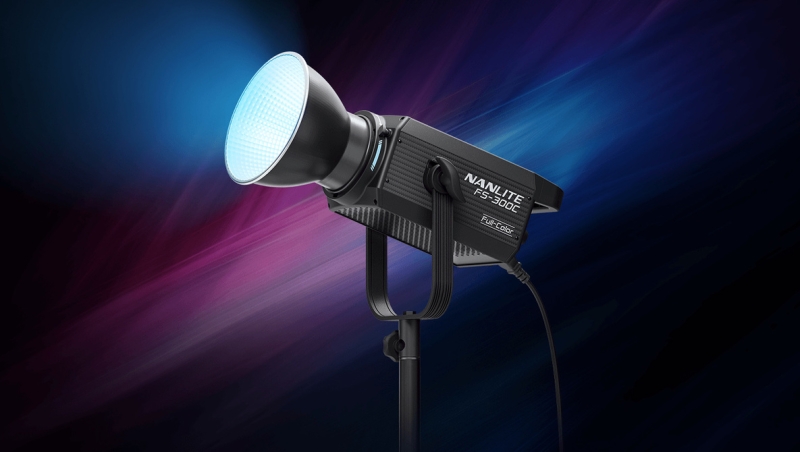Contents
The world of continuous LED lighting is more competitive than ever. In this landscape, Nanlite has carved out a place by offering powerful, reliable, and cost-effective lighting. The FS-300C brings a newer lighting trend—multi-color LEDs—along with high power ratings to an attractive price point. Does RGBW lighting really make a difference?
By integrating a full RGBW engine into the familiar monolight form factor, Nanlite has created a light that aims to be a versatile tool for everything from corporate interviews to creative music videos. I had a chance to put the FS-300C through its paces on some commercial shoots, pairing it with another new piece of kit, the Nanlite Rapid 90 Parabolic Softbox, to see if this combination delivers on its promise of power, versatility, and speed.
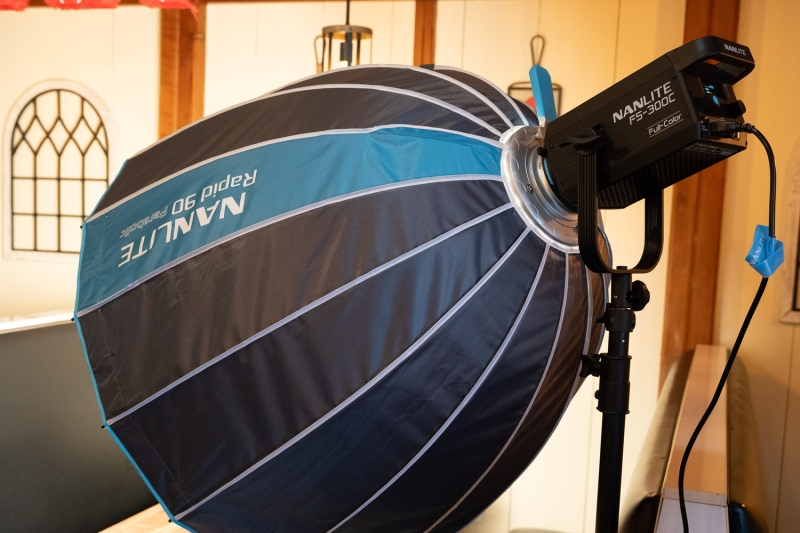
First Impressions
Right out of the box, the FS-300C feels familiar and robust. Its all-in-one design, which integrates the controls and power adapter directly into the light, is a massive plus for portability and ease of use. There’s no external power brick to worry about dangling from your light stand. You simply plug the nearly 15 ft included power cable into the wall or a power station, and you’re ready to shoot. At just over 7 pounds, the fixture is portable enough and easy to rig, and is reasonably light considering the 300 W rating.
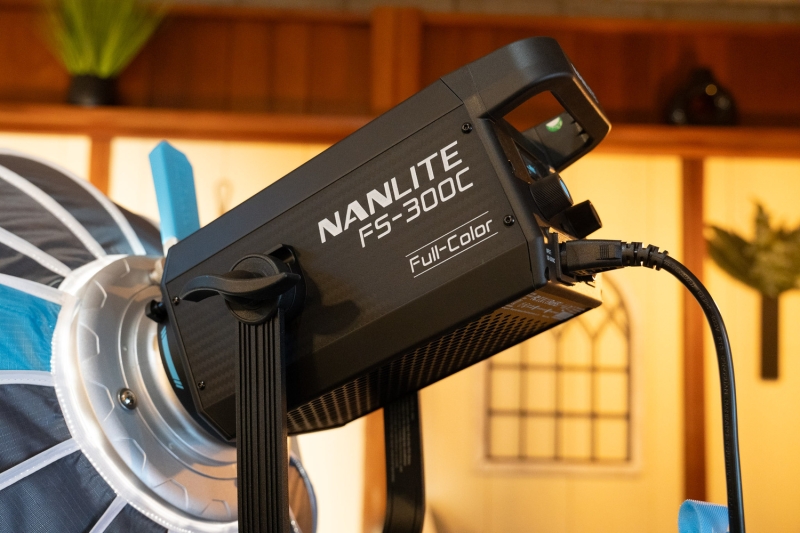
The build quality is solid, and the included 55° reflector is a step above the flimsy add-ins you sometimes get with budget lights, as its metal construction and reflective internal coating feel like they can handle a working set. Compared to some other monolight products I’ve tested, the build is a bit bigger and boxier, especially compared to recent non-RGB models. If size is a major priority and you don’t need RGB, you can save a bit of space with other models.
Light Performance
The standout feature of the FS-300C is its impressive brightness and flexibility in use. In its standard CCT mode, it pushes a full 300 W of power, but what’s truly remarkable is its performance in color mode. Thanks to its RGBW layout, it can sustain 150 W of power when outputting pure red, green, or blue light. This translates to a significant brightness advantage over many competing lights in its class, which often see a dramatic drop-off in output when switching from white.
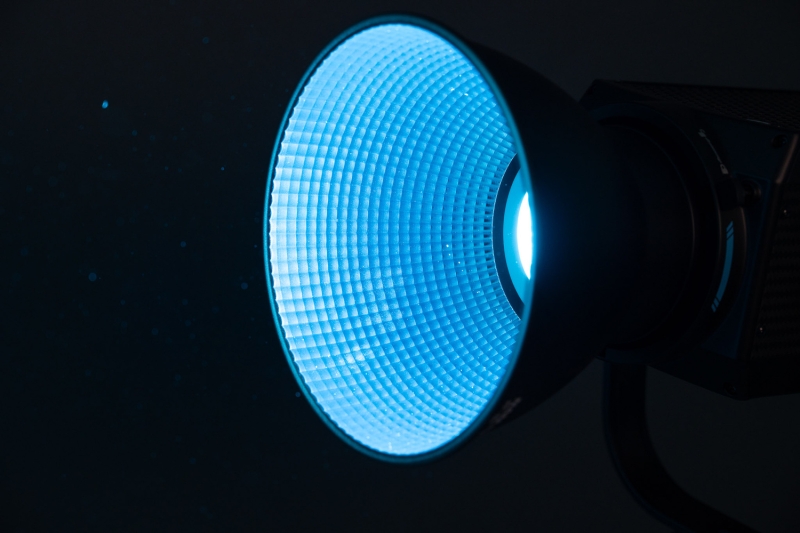
It’s tough to capture how bright and “pure” the color is when using HSI mode, but it noticeably outperforms other RGB lights I’ve tested, thanks to both wattage and technical choices.
With the included reflector, the light is capable of 34,200 lux at 1 meter (at 5,600 K). In practice, this means the FS-300C has more than enough punch to serve as a key light, bounce off a ceiling for a large, soft source, or fight against moderate daylight. For instance, I was easily able to light a tabletop setup with just this light through a lantern modifier, all at about 30 to 40 % power on an f/4 lens. In practical terms, it’s plenty of light for studio work, particularly if you don’t need to freeze action.
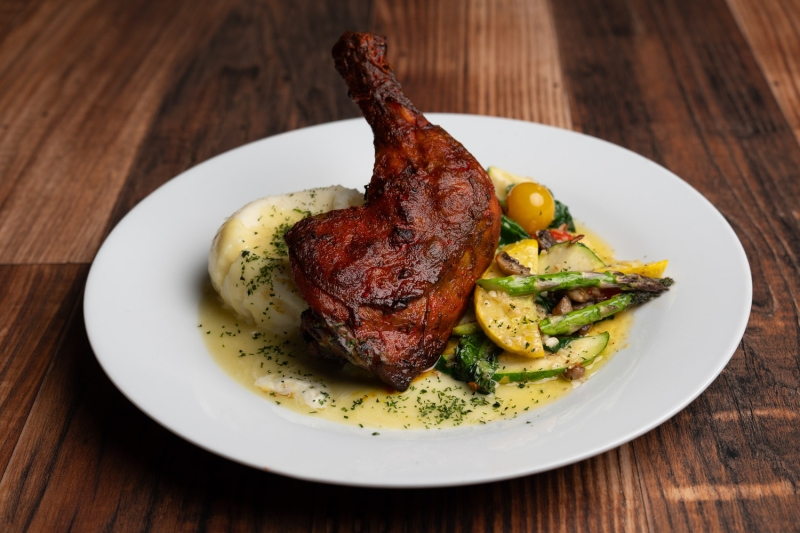
Of course, the key benefit of the FS-300C is the ability to get both practical white light and vibrant, creative colors from a single fixture. The wide CCT range of 2,700 K to 7,500 K, complete with a ±150 green/magenta shift, makes it very easy to match other lights or even practical lights on set. When you need to get creative, a quick switch to HSI mode unlocks 36,000 color options, which can easily be set from the app—no gels needed!
As is common with modern RGB lights, Nanlite has also included a suite of 15 creative lighting effects, emulating everything from a disco and fireworks to a faulty lightbulb and welding. While you probably won’t use these on every shoot, they are incredibly useful to have on the light just in case, as they would be difficult to replicate otherwise.
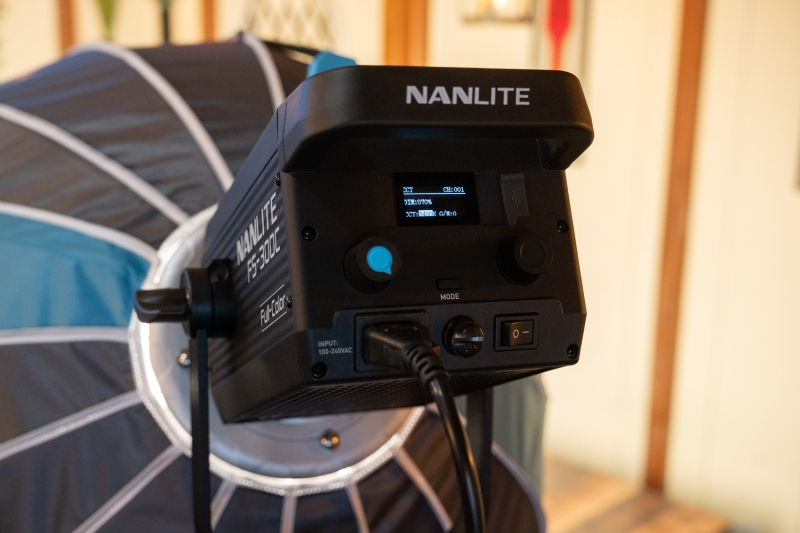
Nanlite has maintained a simple and effective control scheme that will be familiar to just about anyone who’s used a light in the last 10 years. Two knobs and a mode button are all you need to cycle through CCT, HSI, and Effect modes. The knobs handle intensity and color adjustments, and a quick press can reset brightness or lock your settings. The only small issue with the control setup is the viewing angle on the screen when the light is rigged—the display can be a bit cut off on a raised and tilted light.

For more control, there’s the NANLINK app. Connecting via the built-in Bluetooth was easy. The latest version of the app worked flawlessly and didn’t hit you with invasive permission requests, nor did it require an account or sign-in to use. All this represents a big change from the apparent state of the app a year or two ago, so I’ve got to credit Nanlite for improvements here. Mobile apps these days can have a range of issues, but I had no complaints about NANLINK.
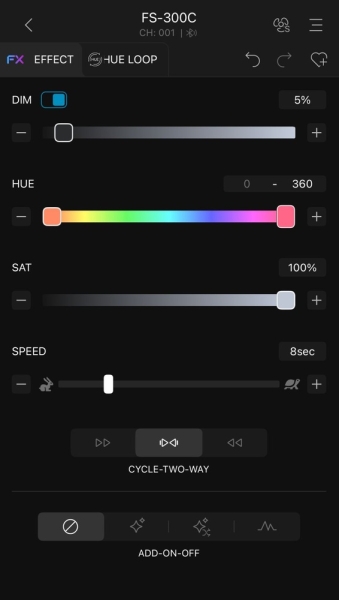
The app interface is clean and responsive, making it easy to dial in precise color settings, save presets, or control multiple lights simultaneously. For more complex shoots, this level of wireless control is a huge help, but it does require you to be using Nanlite’s (admittedly expansive) ecosystem for all the lights you want to control.
The Rapid 90 Softbox
The Nanlite Rapid 90 Parabolic Softbox proved to be an ideal companion for this light. This 35-inch, 16-sided softbox is designed around easy setup and teardown, without compromising on light quality.
Using a rapid-latch speed ring, setup is astonishingly fast. You simply pull a handle built into the modifier while holding the mount, and the entire softbox pops open and locks into place. Seal two small Velcro openings, attach your diffusion, and you’re ready to shoot in under 10 seconds. Takedown is even faster, as you just pull a trigger on the handle and the whole thing collapses instantly, ready to be packed into its carrying bag. This style of deployment is becoming more common for modifiers, but I think Nanlite nailed it: no individual ribs to click into place, a soft-grip handle to keep things comfortable when used on a hot light, and a fold-flat design to make things easy to stow.
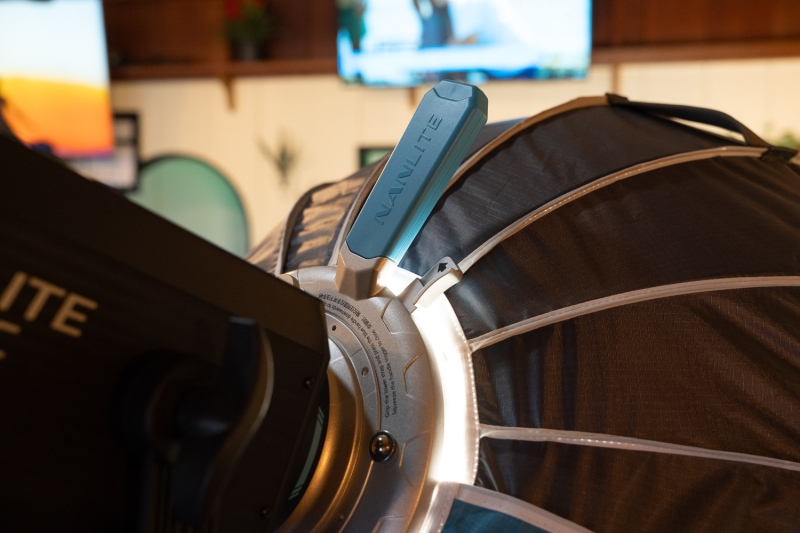
Fortunately, this speed doesn’t come at the cost of quality. The steel ribs give the softbox a sturdy shape that is surprisingly wind-resistant. The fabric feels thick and durable, and the reflective silver interior does an excellent job of maximizing light output. Nanlite includes two layers of diffusion (a standard and a “lite” version) as well as a fabric eggcrate, giving you a full range of throw angles to choose from—ranging from 90 degrees to 50 degrees.
The Nanlite FS-300C is a great option for creatives looking for a single light for practical and creative applications. It brings high-end RGBW capabilities to a price point and form factor that is accessible to a wide range of creators. It’s powerful, easy to use, and versatile.
When paired with the Rapid 90 Softbox, the system becomes a fast and flexible lighting solution perfect for studio work or larger location setups, where you can pair it with an outlet or power station and light stand.
What I Liked
-
All-in-one design with no external ballast makes for a faster, cleaner setup
-
Impressive brightness—300 W of CCT power and strong output in RGB modes provide plenty of light
-
Full RGBW chip design
-
Standard Bowens mount
-
Rapid 90 Softbox offers incredibly fast and easy setup/takedown
-
Complete modifier kit fits in a slim bag
What Could Be Improved
-
The cooling system is quiet, but fanless mode is capped at just 15 % output
-
No case or bag is included for transport of the light
The FS-300C is available for purchase from B&H, along with the Rapid 90 parabolic softbox. An even larger Rapid 120 is also available, measuring 47”, while offering the same features.
